Find Help
More Items From Ergsy search
-
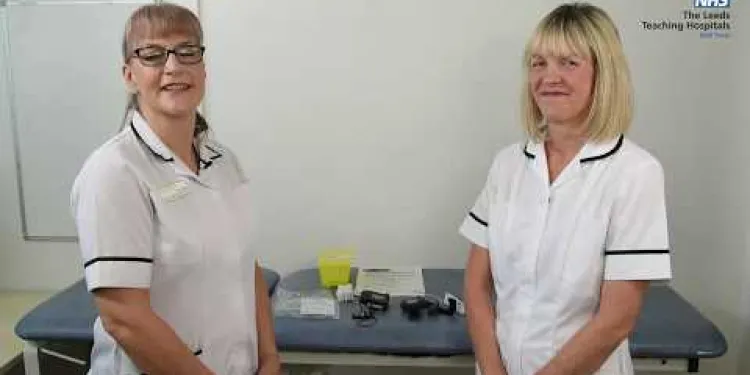
Instructions for setting up your home sleep study
Relevance: 100%
-

Study Shows Link Between Screen Time and Sleep Quality
Relevance: 67%
-

What is the main finding of the study linking screen time to sleep quality?
Relevance: 67%
-

How is sleep apnea diagnosed?
Relevance: 64%
-

What should I do if I suspect I have sleep apnea?
Relevance: 56%
-

What is sleep apnea?
Relevance: 51%
-

What is sleep apnoea?
Relevance: 50%
-

What is complex sleep apnea syndrome?
Relevance: 48%
-

Can sleep apnea be cured?
Relevance: 46%
-

Can children have sleep apnea?
Relevance: 46%
-

How common is sleep apnea?
Relevance: 46%
-

Is snoring always a sign of sleep apnea?
Relevance: 45%
-
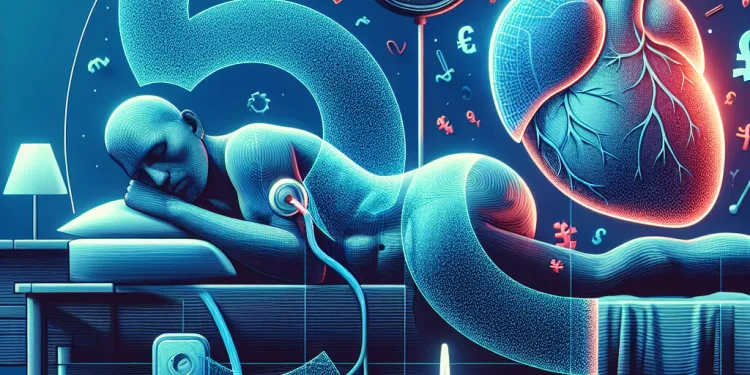
What is complex sleep apnea syndrome?
Relevance: 44%
-

Can weight loss improve sleep apnea?
Relevance: 43%
-

Does screen time affect both sleep onset and sleep maintenance?
Relevance: 43%
-

Why is sleep apnea dangerous?
Relevance: 42%
-

Is it possible to study nursing part-time?
Relevance: 42%
-

Does sleep apnea occur only in adults?
Relevance: 41%
-

Is it safe to sleep after a concussion?
Relevance: 41%
-

Building a Healthy Home Environment
Relevance: 40%
-

What causes obstructive sleep apnea?
Relevance: 40%
-

What is the safest sleep environment for an infant?
Relevance: 40%
-

Can reducing screen time improve sleep quality?
Relevance: 40%
-

Am I eligible to try the new sleep apnea chip?
Relevance: 39%
-
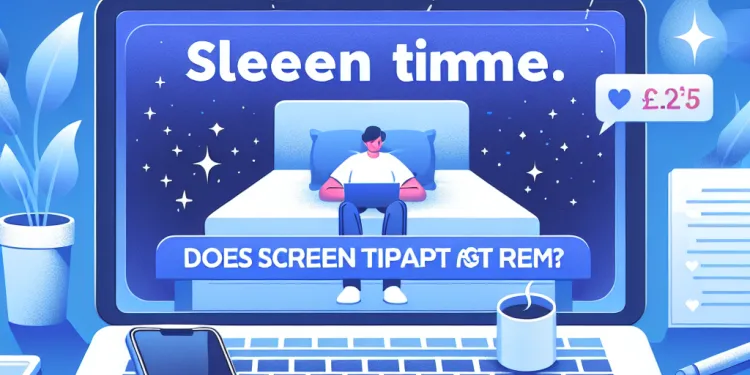
Does screen time impact REM sleep?
Relevance: 39%
-

What are the main types of sleep apnea?
Relevance: 39%
-

The Importance of Sleep for All Ages
Relevance: 39%
-

What treatments are available for sleep apnea?
Relevance: 39%
-

What demographic showed the most significant change in sleep quality due to screen time?
Relevance: 39%
-

Are baby sleep pillows safe?
Relevance: 38%
-

Are there any screen time guidelines recommended for improving sleep?
Relevance: 38%
-

What are risk factors for developing sleep apnea?
Relevance: 38%
-

How does screen time affect sleep quality?
Relevance: 38%
-

Is there a difference in screen time impact on sleep between weekdays and weekends?
Relevance: 37%
-
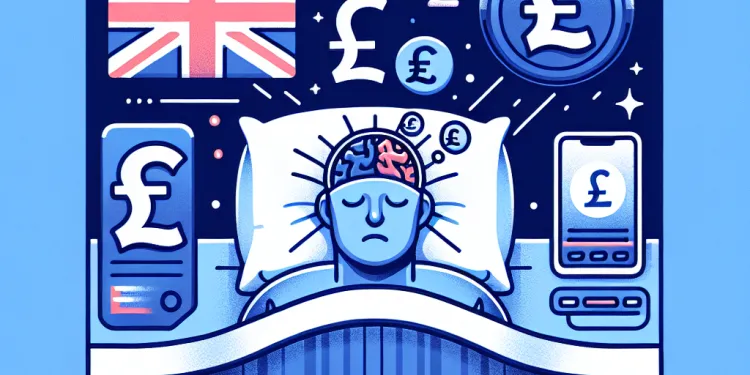
Is it safe to sleep after a concussion?
Relevance: 37%
-

What are common symptoms of sleep apnea?
Relevance: 37%
-

Can alcohol worsen sleep apnea?
Relevance: 37%
-

Introduction to obstructive sleep apnoea
Relevance: 37%
-

Is it okay to use a baby sleep positioner?
Relevance: 37%
-
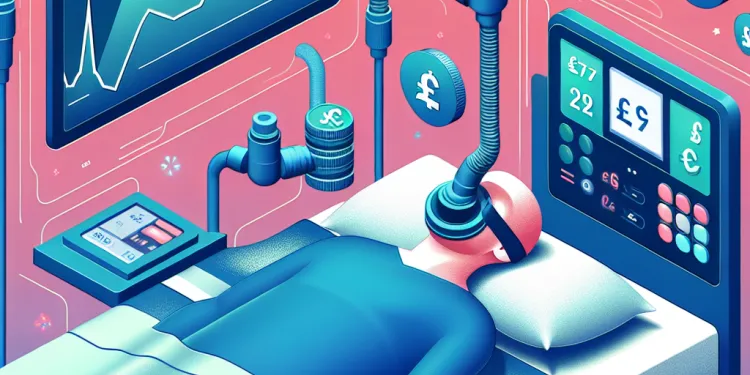
Is CPAP the only treatment for sleep apnea?
Relevance: 37%
Instructions for Setting Up Your Home Sleep Study
Understanding Your Sleep Study Kit
Before beginning your home sleep study, it is important to familiarize yourself with the equipment provided in your kit. Typically, your kit will include a small monitoring device, sensors or electrodes to attach to your body, instructional manuals, and perhaps a nasal cannula for airflow measurement. Ensure you have understood what each component is used for and have read through the instruction manual provided by your healthcare provider.
Preparing for the Sleep Study
Proper preparation is key to obtaining accurate results. On the day of your study, try to follow your usual routine but avoid consuming caffeine or alcohol, as they can affect your sleep patterns. Ensure you go to bed at your usual time. Before attaching the equipment, wash and dry the areas of your body where sensors will be placed. Remove any lotions or oils that may impede proper adhesion.
Setting Up the Equipment
Begin by placing the monitoring device within easy reach of your bed. Attach the chest belt around your upper chest as instructed, making sure it fits snugly but comfortably. Place the sensors according to your instruction manual; common areas include your stomach, chest, and fingertip. If using a nasal cannula, position it comfortably around your ears and insert the prongs into your nostrils. Ensure all connections are secure to avoid data loss during the night.
Testing and Calibration
Once all the equipment is in place, switch on the monitoring device and follow the instructions for a quick test or calibration. This often involves breathing normally for a minute or two while the device records baseline data. Some devices may have a display that shows if all sensors are properly connected. If no errors are displayed, you are ready to proceed with your usual sleep routine.
During and After the Sleep Study
Try to sleep as naturally as possible. The equipment is designed to be minimally intrusive, but if you wake up, ensure all sensors and the device are still properly placed. In the morning, carefully remove the sensors and switch off the device. Pack up the equipment as instructed and return it to your healthcare provider as soon as possible for analysis.
Final Thoughts
Conducting a home sleep study might seem daunting, but following these instructions should help make the process straightforward. If you encounter any issues, contact your healthcare provider for guidance. Accurate data collection is crucial for diagnosing sleep disorders and implementing effective treatments.
Instructions for Setting Up Your Home Sleep Study
What's in Your Sleep Study Kit
Before you start your sleep study at home, you need to know what is in your kit. It usually has a small machine to check your sleep, sensors to stick on your skin, a manual with instructions, and maybe a tube for your nose to check your breathing. Make sure you know what each thing is for and read the manual that comes with it.
Getting Ready for the Sleep Study
Getting ready is very important to get good results. On the day of your study, do what you usually do but do not drink caffeine or alcohol because they can change how you sleep. Go to bed at your normal time. Wash and dry the areas where you will put the sensors. Do not use lotions or oils there.
Setting Up the Equipment
Put the machine close to your bed. Wrap the chest belt around your upper chest. It should not be too tight or too loose. Put the sensors as the manual says. You might put them on your stomach, chest, and fingertip. If you have a nasal cannula, put it around your ears and in your nose. Make sure everything is connected well.
Testing and Calibration
After you set up everything, turn on the machine and do a quick test. This test checks if everything is working. Breathe normally for a few minutes so the machine can record your breathing. Some machines have a screen that shows if everything is good. If it does not show any errors, you can go to sleep like usual.
During and After the Sleep Study
Try to sleep like you usually do. If you wake up, check that everything is still in place. In the morning, gently take off the sensors and turn off the machine. Put everything back in the kit. Return it to your healthcare provider as soon as you can. They will check the results.
Final Thoughts
Doing a sleep study at home might feel hard, but these steps can help make it easy. If you have any problems, ask your healthcare provider for help. Proper data collection helps doctors understand sleep problems and find the best treatment.
Frequently Asked Questions
What is a home sleep study?
A home sleep study is a simplified version of an in-lab sleep study. It uses portable equipment to monitor your breathing, oxygen levels, and other sleep metrics while you sleep at home.
How do I set up the home sleep study equipment?
First, carefully read the instructions included with the equipment. Generally, you will need to attach sensors to your body, such as a nasal cannula, chest belt, and finger pulse oximeter. Make sure all connections are secure and the equipment is switched on.
What time should I start the study?
Start the study just before your usual bedtime. Make sure to follow your regular nighttime routine so the data collected reflects your normal sleep patterns.
Can I move around during the study?
Yes, you can move around as needed. The equipment is designed to be flexible and should not restrict your normal sleeping movements.
What should I do if a sensor falls off during the night?
If a sensor falls off, attempt to reattach it as quickly as possible. Refer to the instructions or the setup video provided for proper placement.
Can I eat or drink before the study?
It's best to avoid caffeine, alcohol, and heavy meals for at least a few hours before your study to ensure accurate results.
Is the equipment safe to use?
Yes, the equipment provided for a home sleep study is safe and has been tested for home use. If you have any concerns, consult the instructions or contact your healthcare provider.
How long does the home sleep study last?
Typically, the study lasts for one night. The equipment will record data throughout the night, and you can remove it and turn it off in the morning.
Do I need to follow any specific instructions the night before the study?
Ensure you have read all the instructions provided and have the equipment ready to set up. It's also a good idea to avoid naps and stick to your regular sleep schedule the day before the study.
What do I do with the equipment after the study?
Follow the instructions for returning the equipment. This may involve placing it back in its original packaging and dropping it off at a specified location or arranging for a courier service to collect it.
Will I be able to sleep with the equipment on?
Most people are able to sleep with the equipment on without significant issues. The design is meant to be as unobtrusive as possible.
Do I need to record anything during the study?
Usually, the equipment will automatically record all necessary data. However, you may be asked to fill out a sleep diary or make a note of any unusual occurrences.
Can I take my usual medications before the study?
Yes, continue taking your regular medications unless instructed otherwise by your healthcare provider.
What should I do if the equipment malfunctions?
Refer to the troubleshooting section of your instruction manual. If the issue persists, contact the support number provided for further assistance.
How will I receive my results?
Your healthcare provider will analyse the data collected from your home sleep study and discuss the results with you at a follow-up appointment. This may include a treatment plan if a sleep disorder is diagnosed.
What is a home sleep study?
A home sleep study is a test you do at home. It helps find out if you have sleep problems. You wear a special machine while you sleep. This machine checks your breathing and helps doctors understand how well you sleep.
If you think you have sleep problems, talk to a doctor. They can tell if a home sleep study is a good idea for you. The doctor will give you all the things you need and show you how to use them.
Ask someone you trust for help if you need it. You can also use videos or pictures that show how to set up the test. These can make things easier to understand.
A home sleep study is an easy version of a sleep study done at a clinic. You use special tools at home to check your breathing, how much oxygen is in your blood, and other things while you sleep.
How to Use the Home Sleep Study Kit?
First, read the instructions that come with the equipment. They will tell you what to do. You will need to put sensors on your body. These are parts like a nose piece, a belt for your chest, and a clip for your finger. Make sure everything is attached properly and the equipment is turned on.
When should I start the study?
Think about what time you find it easy to learn. Here are some tips:
- Pick a quiet time with no distractions.
- Use a clock or timer to help you know when to start.
- Ask someone to remind you when it's time to study.
Begin the study right before you go to bed. Do what you usually do before sleep. This helps show your normal sleep habits.
Can I walk around during the study?
You can walk around if you need to. It's okay to take breaks. You might want to use a timer to remind you when to go back. If you have headphones, they can help you focus when you return. You can also have a quiet space where you feel comfortable studying. You can ask someone to help you set this up.
Yes, you can move around when you need to. The gear is made to be flexible, so it won't stop you from moving in your sleep like usual.
What should I do if a sensor falls off while I am sleeping?
Sometimes, a sensor can fall off when you are sleeping. Here is what you can do:
- Don't worry! You can fix it.
- In the morning, check the sensor to see if it has fallen off.
- If it has, clean the skin where the sensor was.
- Put a new sensor in the same place or in a different spot if needed.
- Ask someone for help if you need it.
- You can use sticky medical tape to help keep it on next time.
- If you have a phone or device that helps with sensors, you can set an alarm to check it.
Remember to stay calm and try again.
If a sensor falls off, try to put it back on right away. Look at the instructions or watch the setup video to see how to do it right.
Can I eat or drink before the study?
You might need to stop eating or drinking before the study. Ask your doctor what you should do. You can use pictures or a calendar to help you remember. You can also ask for help from a friend or family member.
It is good not to have drinks like coffee or alcohol before your test. Also, try not to eat big meals for a few hours before. This will help the test be correct.
Is the equipment safe?
Yes, the tools you use for a sleep study at home are safe. They have been checked to make sure they are okay to use at home. If you are worried, you can look at the instructions or talk to your doctor for help.
How long is the home sleep test?
The home sleep test usually lasts for one night. You start it when you go to bed and stop it when you wake up.
Helpful Tools: You can ask someone at home to help you put on the sleep study device. You can also set an alarm to remind you to start the test before sleeping.
The study is usually for one night. The machines will take notes while you sleep. In the morning, you can take them off and switch them off.
What should I do the night before the study?
Here is a simple checklist to follow:
- Listen carefully to what the doctor or nurse tells you.
- If you have questions, ask someone to help you understand.
- If you have papers with instructions, ask someone to read them with you.
- Use a calendar or reminder app to mark the study day.
Make sure you read all the instructions. Get your things ready to set up. Try not to take naps. Go to bed at your usual time the day before the study.
What should I do with the equipment after the study?
After the study, you will need to return the equipment. Here is how you can do it:
- Check if there are any instructions on how to return the items.
- Ask someone to help you if you are not sure.
- Contact the study team if you have questions.
If you have trouble reading, you can use tools like text-to-speech apps to help. You can also ask a friend or family member to read the information with you.
Here’s how to return the stuff you borrowed:
Put the things back in the box they first came in. You might need to take it to a special place or get a delivery person to pick it up.
Try using reminders, like writing notes or setting alarms on your phone, to help remember the steps.
Can I sleep with the machine on?
Yes, you can sleep with the machine on. It is made to be safe and comfortable.
If you need help getting used to it, you can try:
- Wearing the machine while you are awake to get used to it.
- Listening to calming music before bed.
- Talking to someone if you feel worried about it.
Most people can sleep with the equipment on without big problems. It is made to be comfortable and not get in the way.
Do I need to write anything down during the study?
This means: Do I have to keep notes while I am learning? Here is how you can do it easily:
- Use a notebook to write important things.
- Draw pictures to help you remember.
- Ask someone to help you if you find it hard.
- Use a voice recorder if writing is tricky.
These tools can make it simpler and more fun!
Most of the time, the machine will keep track of all the important information for you. But sometimes, you might be asked to write down your sleep habits or anything strange that happens while you sleep.
Can I keep taking my medicine before the study?
It is important to know if you can take your medicine before the study. Here is what you can do:
- Ask your doctor if it is okay.
- Read any instructions from the study carefully.
- Use a reminder tool like a calendar or an app to keep track of your medicine.
If you have any questions, talk to your doctor.
Keep taking your medicine like you usually do. Only stop if your doctor tells you to.
What should I do if the equipment stops working?
If something stops working, stay calm.
Try these steps:
- Turn it off and on again. This might help fix it.
- Check the plugs and cables. Make sure they are connected properly.
- Ask for help. You can ask a friend or call someone who knows how to fix it.
Use simple tools:
- Watch a video about fixing it. Videos can show you what to do.
- Use a picture guide. Pictures can help you see each step clearly.
Look at the "How to Fix Problems" section in your instruction book. If you still have trouble, call the help number in the book for more help.
How will I get my results?
Your doctor will look at the information from your sleep study at home. They will talk to you about the results at your next visit. If they find a sleep problem, they may give you a plan to help you feel better.
Useful Links
- Ergsy carfully checks the information in the videos we provide here.
- Videos shown by Youtube after a video has completed, have NOT been reviewed by ERGSY.
- To view, click the arrow in centre of video.
- Most of the videos you find here will have subtitles and/or closed captions available.
- You may need to turn these on, and choose your preferred language.
- Go to the video you'd like to watch.
- If closed captions (CC) are available, settings will be visible on the bottom right of the video player.
- To turn on Captions, click settings .
- To turn off Captions, click settings again.
More Items From Ergsy search
-

Instructions for setting up your home sleep study
Relevance: 100%
-

Study Shows Link Between Screen Time and Sleep Quality
Relevance: 67%
-

What is the main finding of the study linking screen time to sleep quality?
Relevance: 67%
-

How is sleep apnea diagnosed?
Relevance: 64%
-

What should I do if I suspect I have sleep apnea?
Relevance: 56%
-

What is sleep apnea?
Relevance: 51%
-

What is sleep apnoea?
Relevance: 50%
-

What is complex sleep apnea syndrome?
Relevance: 48%
-

Can sleep apnea be cured?
Relevance: 46%
-

Can children have sleep apnea?
Relevance: 46%
-

How common is sleep apnea?
Relevance: 46%
-

Is snoring always a sign of sleep apnea?
Relevance: 45%
-

What is complex sleep apnea syndrome?
Relevance: 44%
-

Can weight loss improve sleep apnea?
Relevance: 43%
-

Does screen time affect both sleep onset and sleep maintenance?
Relevance: 43%
-

Why is sleep apnea dangerous?
Relevance: 42%
-

Is it possible to study nursing part-time?
Relevance: 42%
-

Does sleep apnea occur only in adults?
Relevance: 41%
-

Is it safe to sleep after a concussion?
Relevance: 41%
-

Building a Healthy Home Environment
Relevance: 40%
-

What causes obstructive sleep apnea?
Relevance: 40%
-

What is the safest sleep environment for an infant?
Relevance: 40%
-

Can reducing screen time improve sleep quality?
Relevance: 40%
-

Am I eligible to try the new sleep apnea chip?
Relevance: 39%
-

Does screen time impact REM sleep?
Relevance: 39%
-

What are the main types of sleep apnea?
Relevance: 39%
-

The Importance of Sleep for All Ages
Relevance: 39%
-

What treatments are available for sleep apnea?
Relevance: 39%
-

What demographic showed the most significant change in sleep quality due to screen time?
Relevance: 39%
-

Are baby sleep pillows safe?
Relevance: 38%
-

Are there any screen time guidelines recommended for improving sleep?
Relevance: 38%
-

What are risk factors for developing sleep apnea?
Relevance: 38%
-

How does screen time affect sleep quality?
Relevance: 38%
-

Is there a difference in screen time impact on sleep between weekdays and weekends?
Relevance: 37%
-

Is it safe to sleep after a concussion?
Relevance: 37%
-

What are common symptoms of sleep apnea?
Relevance: 37%
-

Can alcohol worsen sleep apnea?
Relevance: 37%
-

Introduction to obstructive sleep apnoea
Relevance: 37%
-

Is it okay to use a baby sleep positioner?
Relevance: 37%
-

Is CPAP the only treatment for sleep apnea?
Relevance: 37%


